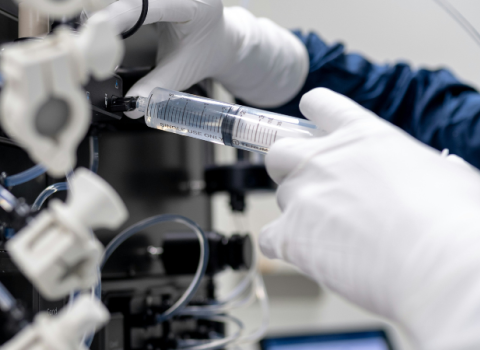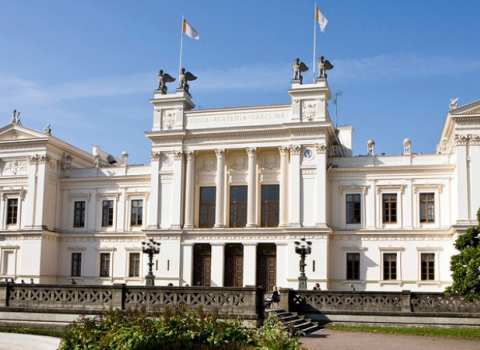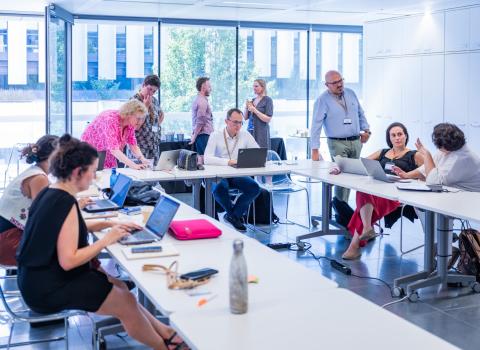The project OpenSuperQPlus – part of the European Quantum Technology Flagship – gets underway. It is continuing and enhancing the project OpenSuperQ and brings together most of its team with new partners – including the key partners of the national initiatives of the Netherlands, France, Finland, Germany, Hungary and Sweden, full-stack quantum computing startups and many other key players in the field.
The large-scale follow-up project coordinated by Forschungszentrum Jülich involves a total of 28 partners from 10 countries. This team has formed a framework partnership and put forward an ambitious seven year agenda ultimately leading to a 1000 qubit quantum computing system.
The consortium is now launching its first stage OpenSuperQPlus 100 that on the one hand aims at developing several systems for evaluating hardware and software as well as a user-oriented 100 qubit system for first quantum applications within the next 3.5 years. With regard to the second stage it will also look at the critical components and technological decisions needed for the 1000 qubit quantum computing system.
CSC participates on two fronts
CSC is participating in OpenSuperQPlus on two fronts. In the effort on efficient integration of quantum computing resources into practically useful hybrid quantum/classical HPC workflows, CSC leads the task on unifying cloud access to the various quantum computer systems within the project. This draws on synergies from several existing programmes for setting up user-friendly access portals throughout Europe, such as the Nordic-Estonian NordIQuEst project and the Finnish Quantum-Computing Infrastructure (FiQCI).
“There are several complementary ways to provide access to quantum computing, and here, diversity is crucial. At the same time, there is a clear need for more efficient exchange of the know-how that is building up in the different projects throughout Europe. OpenSuperQPlus provides a forum for turning discussion into concrete actions,” says Mikael Johansson, Manager for Quantum Technologies at CSC.
Together with IQM Quantum Computers, CSC will extend the capability of the Elmer finite element code to enable highly parallel and efficient quantum processing unit (QPU) circuit design and simulation. The focus will be on extending the modeling tool to enable running large, computationally demanding jobs on HPC infrastructure. All the software components and interfaces developed in the task will be open sourced and provided to the community through public repositories.
“Elmer has a decades-long history of providing highly efficient tools for multi-physics simulations, from computational glaciology to electromagnetics. The work in OpenSuperQPlus to extend the functionality to QPU circuit simulation showcases the underlying efficiency and versatility of Elmer,” comments Peter Råback, Product Manager for Elmer at CSC.
Bringing together European specialists
OpenSuperQPlus (Open Superconducting Quantum Computers) is funded by the European Union with 20 million euros from a specific quantum grant within the Horizon Europe framework programme. This budget goes a long way through synergies with local and national initiatives.
“We are bringing together European specialists for all the components of such a quantum computing system under a unified framework – be they in the public or private sector. The technological challenge of beating errors in quantum computers and scaling them up needs all hands on deck from the outstanding quantum ecosystem in Europe,“ says coordinator Frank Wilhelm-Mauch of Forschungszentrum Jülich.
Like its predecessor project OpenSuperQ, the project's continuation within the framework of OpenSuperQPlus aims at a versatile quantum computer made in Europe. The consortium anticipates special use cases in quantum simulation for the chemical industry, materials science or in solving optimisation problems and in machine learning.
This article was first published on 1 March by CSC.





 A unique international forum for public research organisations and companies to connect their external engagement with strategic interests around their R&D system.
A unique international forum for public research organisations and companies to connect their external engagement with strategic interests around their R&D system.